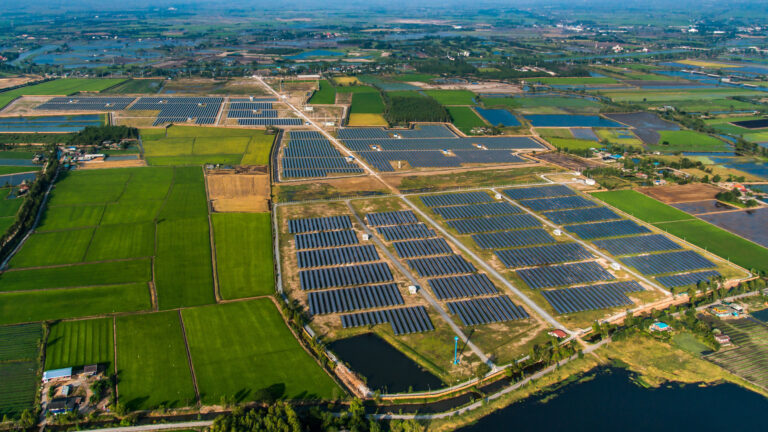Solar Farm
Changing
the way.
Empowering
the world.

Solar energy holds great promise as a renewable energy source in the Philippines, owing to the country’s extensive exposure to sunlight. Considering its potential economic, energy, and environmental impacts, solar energy is poised to play a crucial role in the country’s energy portfolio.
According to the National Renewable Energy Plan, the target for solar technology is 1528MW, with projections indicating the potential to surpass this goal. Anticipated peak demand is expected to rise to 14,311 GWh by 2018 and 24,534 GWh by 2030, compared to 9,226 GWh in 2008, necessitating the installation of 17,000 MW of new capacity to meet these projections.
With the Philippines’ abundant sunlight, the potential power generation capacity ranges from 4.5 to 5.5 kWh per square meter per day. Given the declining cost of solar-powered systems, the Philippines is well positioned to leverage solar energy. Reduced fuel consumption renders solar energy an economically feasible electricity source for consumers and industries in the Philippines. Investing in solar energy offers substantial long-term savings, as a typical solar kit boasts a lifespan of up to 25 years, providing cost-free energy over an extended period.
Crucial Steps to Undertake
Consequently, there is a need for comprehensive research on leveraging solar rooftop installations to minimize the requirement for land in solar power generation. EPDC endeavors to collaborate with an established solar farm company to actualize its project and address the associated risks effectively.
Other Impacts of a Solar Farm
The Department of Energy (DOE) has sanctioned the implementation of over 200 solar power projects across the nation. Considering the substantial land area available for solar panel installation, it is imperative to assess the potential impact on agriculture and food security, particularly during the rainy season in the Philippines. The DOE has emphasized that variable renewable energy (VREs), such as solar and wind, are susceptible to intermittent hazards, notably typhoons, which may compromise grid reliability.
The Benefits of a Solar Farm
The benefits of a solar farm include creating job opportunities in constructing and maintaining the facilities, reducing fuel consumption, creating an energy-secure country, providing accessibility and inclusivity in underserved communities, its potential and affordability, making it an investment attraction, and being an environmentally friendly energy source.

Solar Farm
Job Opportunities
Solar Farm
Energy Secure Country
Solar Farm
Inclusivity
Solar Farm
Potential in the Philippines
Solar Farm
Investment
Solar Farm
Access to Energy
Solar Farm
Reduce Fuel
Solar Farm
Reduce Carbon Emission









